85% of our work is shipped into and out of our facility. You are certainly welcome to visit our office and have your parts evaluated in person, but since we have customers in all 50 states, Canada, Mexico, Costa Rica, Norway, Iceland, Germany, and one job from a Russian racer, most of our work is shipped. Please put a note inside your package with a list of what is included and how you want us to contact you.
International customers: please contact Sue in our office prior to shipment to ensure that your parts do not get held up in customs. FedEx, UPS, and the U.S. Mail are all here every day, and freight trucks are also common. Once we receive your parts we open the packages and digitally photograph all of the parts for our inventory tracking. These photographs are loaded into our computer, as well as notes and questions that we may have as we are evaluating each of your parts individually. We have computer terminals throughout the plant with the pictures and notes of all in-process jobs to ensure that your parts are done correctly and that you receive your own parts back. We enter the prices for each item. We determine the price based upon how much time we are going to have in repairing and restoring the part. The prices that we give once we see the parts in person are firm and we stand by them. Prices given out over the phone sight unseen are estimates only. If there are any areas of parts that will not be seen once the item is assembled, please let us know. Even though the entire part will be plated, any areas that do not need sanded and buffed will save us time and you money. Paper copies of all this information is also printed out. We can then contact you however you specify in your packing list: email, fax, or U.S. Mail. We do not start your project until a down payment (typically 50%) has been received. We accept Cash, Business Check, Personal Check, Visa, MasterCard, and Discover.
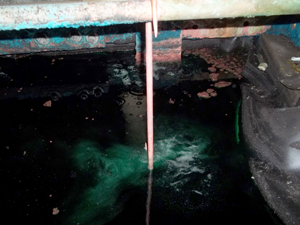 Stripping
Stripping
Before any repair work can be done to your part, all old surface finishes and contaminants must be removed. Grease and oil are removed in a parts washer that is serviced by a waste reclamation company. Paints and powder coating are removed by a hot tank stripper or by a dry blast method. Existing plating is removed by reverse plating in a 55 Baume solution comprised of sulfuric acid, water, copper sulfate, and glycerin. Rust is removed by blasting and/or pickling in hydrochloric acid. Whatever the requirement, Paul’s has several suitable removal methods available that are designed to remove the previous coating without damage to the substrate itself.
Plating only looks as good as the surface that it is applied to. Any deviation in the surface will mirror up and be magnified by the application of bright plating. Therefore, straightening, grinding, sanding, detailing, and buffing are extremely critical steps in determining the final outcome of the re-plated part. At Paul’s we take great pride in our ability to perform these tasks. Our ability to train new employees and retain our experienced ones is the prime reason that we have been able to grow, while providing consistent results project after project. It is ability (hand-eye coordination) and employee pride and determination that sets our work apart.
When deterioration is beyond removal by conventional sanding and buffing without risk to the substrate or its detail, the surface needs to be restored. This is accomplished by applying a substantial soft copper plating followed by a re-sanding. If required, remaining pitting, scratches, holes, or low areas are then silver soldered. The solder is then "cut down" to be level with the copper surface, and then the item is re-copper plated, enabling the entire surface, including the area previously soldered, to be polished. Depending upon inspection, the part will either have the copper plate reapplied and reworked, or have the final triple plate applied.
Cleaning - In order for plating to properly adhere, the substrate must be completely free of all foreign materials, such as oil, buffing compounds, finger prints, and soap films. At Paul’s the process begins in an ultrasonic cleaner tank containing a special hot buffered cleaner. This process removes virtually all the foreign materials, including buffing compounds, even down in threaded mounting holes. The part is then transferred to the scrub tank where it is meticulously hand washed to be certain that it is completely clean.
After a thorough water rinse, the item is then racked or wired to a copper hook. It is the rack, or the hook & wire, that will allow the electrolization of the piece in the various plating tanks. The cleaning is continued at this point with a dip in a dilute acid & water bath, to ensure the removal of any soap residue, as well as to activate the molecular surface of the part. This dip is followed by a clean water rinse, and the item is now ready for its base coat in the copper strike tank.
The copper strike covers down in recesses where other plating baths will not reach. The copper layer’s function is for adhesion so that the subsequent nickel plating or acid copper plating, which have an acidic base, will not react with the substrate, creating the potential for lack of adhesion (peeling).
Upon completion of the strike and accompanying rinses, a layer of acid copper is plated. This is a soft, ductile, thick layer of copper used to resurface the part, to prepare it for further work in the polishing department. If further work is not required, the copper struck item goes to the nickel solution where a heavy layer of bright nickel is applied. The nickel is the main corrosion resistant or protective layer applied to the item. It is also the layer that provides the decorative "bright" effect to the item.
The last step in the triple plate process is the chrome plate. This is a thin, translucent layer of a hard, weather resistant metal. The chrome’s main purpose is to prevent the tarnishing "dulling" of the bright nickel. After rinsing, the chromed object is ready for final inspection.
After drying, items are un-racked or de-wired and carted to the wrapping room where they receive their final inspection. Upon a satisfactory inspection, the parts receive an initial waxing and are wrapped in appropriate materials for protection. As each item is placed with the other items in a particular job, it is checked out of the inventory photograph, assuring the client receipt of all their parts. Completed jobs are then packaged in heavy corrugated boxes and padded with foam fill to ensure safety during shipment.
Contact us for a free estimate!


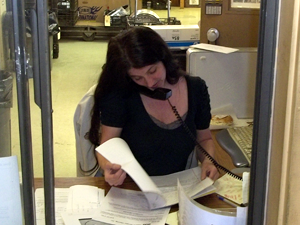 Receiving & Pricing
Receiving & Pricing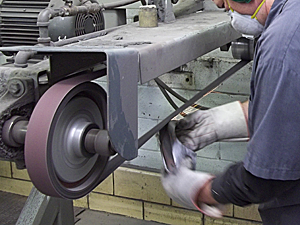 Surface Preparation
Surface Preparation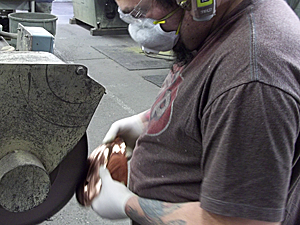 Surface Restoration
Surface Restoration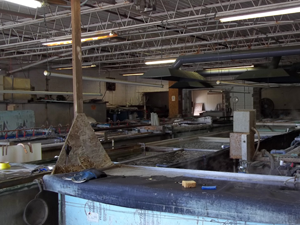 Plating
Plating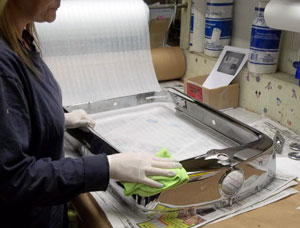 Final Inspection & Shipping
Final Inspection & Shipping